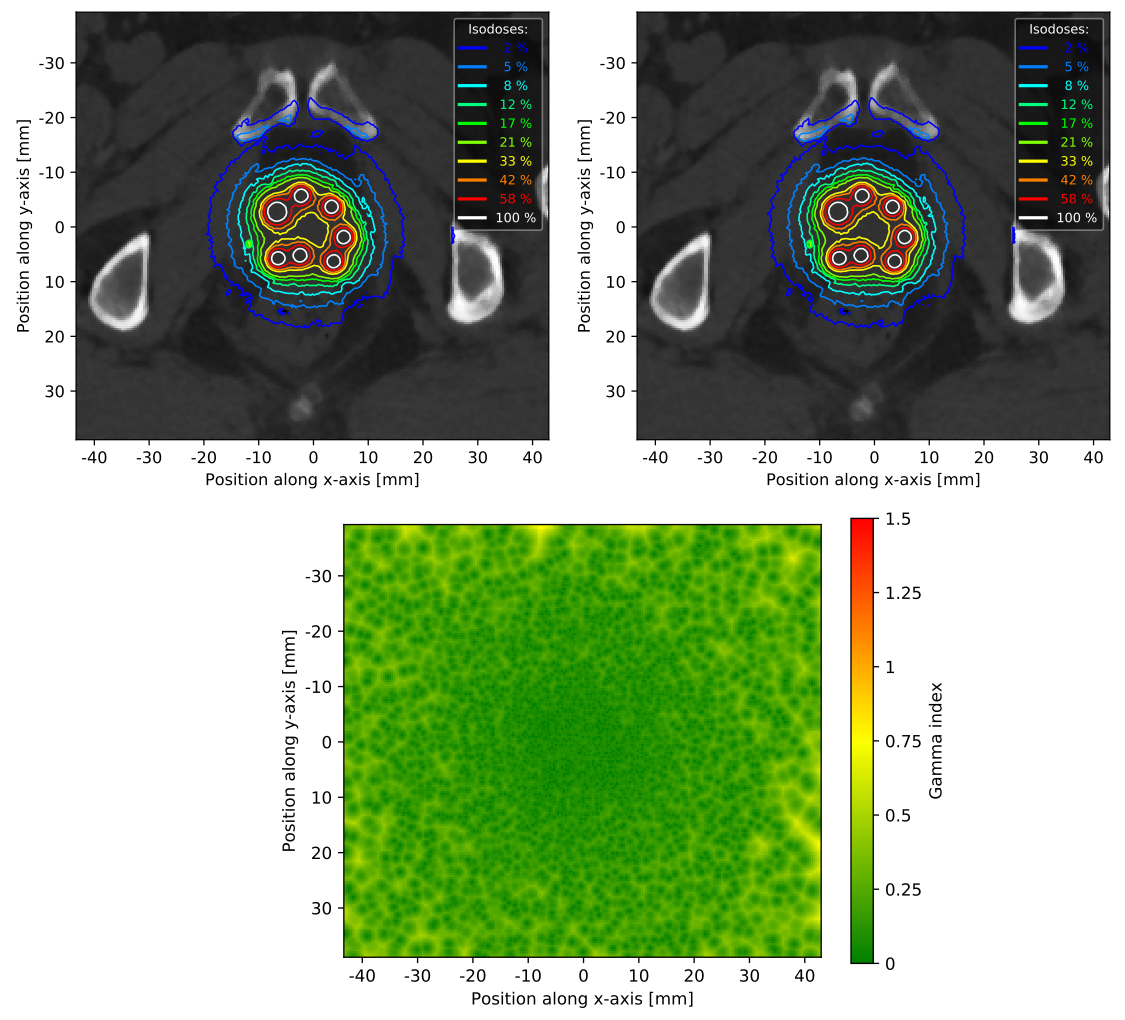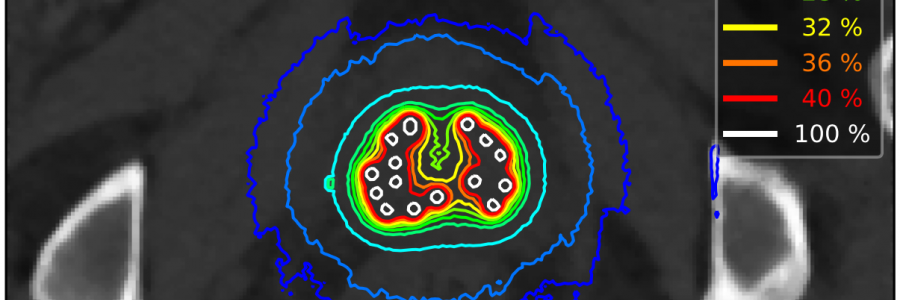In brachytherapy, plans are routinely calculated using the AAPM TG43 formalism which considers the patient as a simple water object. An accurate modeling of the physical processes considering patient heterogeneity using Monte Carlo simulation (MCS) methods is currently too time-consuming and computationally demanding to be routinely used. In this work we developped a fast and accurate MCS using GPU architecture, new variance reducation technique and accurate phase-space source modeling. The proposed method is capable of simulate a complete patient dosimetry in less than 1 s.
A high statistics Monte Carlo (MC) simulation was performed to record particles going out of a STM1251 seed into a phase-space file (file containing properties of every particle). While considering a new simulation with a patient, this phase-space file is used as a virtual source. Particles read out from the file will be transformed according to seeds position and orientation. This phase-space file was recovered by using GATE with a realistic modeling of the 125I seeds.

STM1251 seed modeled in GATE software
The final phase-space file was used within GGEMS to simulate a virtual source corresponding to the patient specific part of the simulation. GGEMS includes a hybrid GPU navigator, allowing navigation within voxelized patient specific images in LDR brachytherapy. In addition, we have developped a new variance reduction technique to improve the speed of particle navigation calculation through voxelized phantom (i.e. patient image).
The method is based on the super voxel (SV) concept coming from the computer graphics domain. It consists in grouping virtually neighboring voxels together into a virtual SV. Each of them embeds parameters that are representative of the contained voxels. This new method, named Super Voxel Woodcock (SVW), consists in grouping the voxels of the volume in a super voxel grid (pre-processing step) by associating to each of the super voxels a local value of the most attenuate medium which will later serve to the interaction distances sampling. SVW allows reducing the sampling of the particle path while a high-density material is present within the simulated phantom.

Pelvic CT overlaid with isodose given percentage of the radiation dose prescription obtained from brachytherapy MCS using standard tracking (top left) and the proposed SVW method (top right). Dose maps comparison between standard and SVW methods using gamma index with the 3%/3mm criterion (bottom).
Final results have shown that dose maps were equivalent between the proposed SVW method and the regular navigator, but the simulation runtime was divided by 5.6 when using our method. Finally, by combining GGEMS, variance reduction technique and virtual source modeling, we are capable of running a MCS for a realistic LDR brachytherapy treatment in 0.9 s (NVIDIA GTX980).
Related publications:
Behlouli A, Visvikis D, Bert J (2018). Improved Woodcock tracking on Monte Carlo simulations for medical applications. Phys. Med. Biol. 63, 225005.
Bert J, Lemaréchal Y, Visvikis D (2016). New hybrid voxelized/analytical primitive in Monte Carlo simulations for medical applications. Phys. Med. Biol. 61, 3347–3364.
Bert J, Perez-Ponce H, El Bitar Z, Jan S, Boursier Y, Vintache D, Bonissent A, Morel C, Brasse D, Visvikis D (2013). Geant4-based Monte Carlo simulations on GPU for medical applications. Phys. Med. Biol. 58, 5593–5611.
Bert J, Visvikis D (2017). GGEMS : GPU GEant4-based Monte carlo Simulation. IDDN.FR.001.180017.000.S.P.2017.000.31230.
Lemaréchal Y, Bert J, Falconnet C, Després P, Valeri A, Schick U, Pradier O, Garcia M-P, Boussion N, Visvikis D (2015). GGEMS-Brachy: GPU GEant4-based Monte Carlo simulation for brachytherapy applications. Phys. Med. Biol. 60, 4987–5006.
